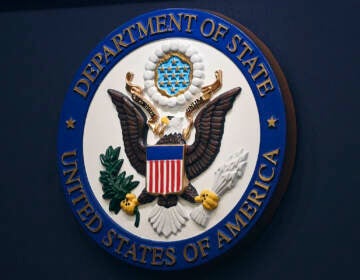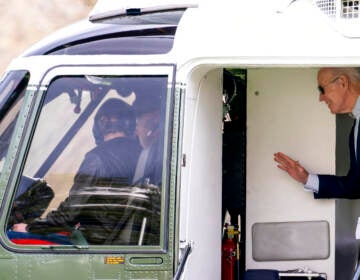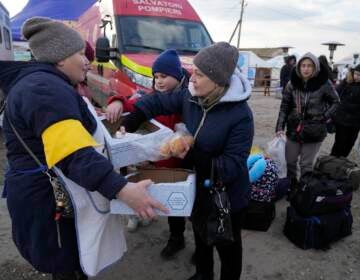‘Virtual’ refugee journey a somber reminder things could always be worse
-
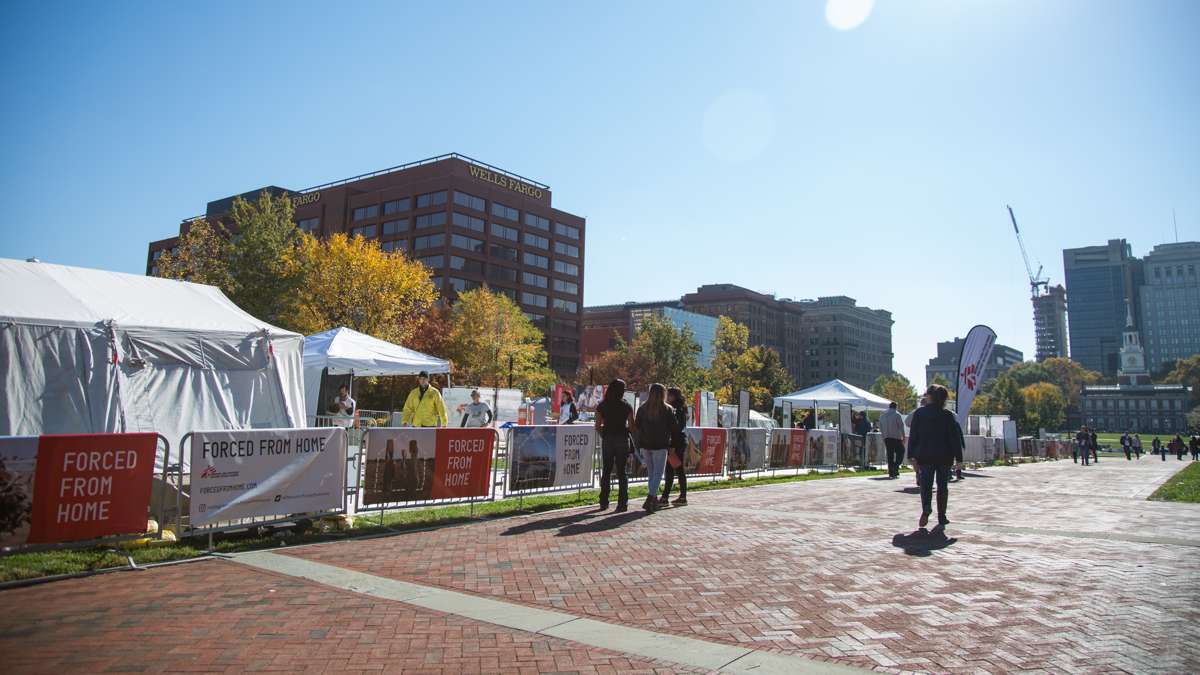
A free, interactive, traveling exhibit presented by Doctors Without Borders about the migrantion crisis worldwide is open on Independence Mall November 5 to13. (Emily Cohen for NewsWorks)
-
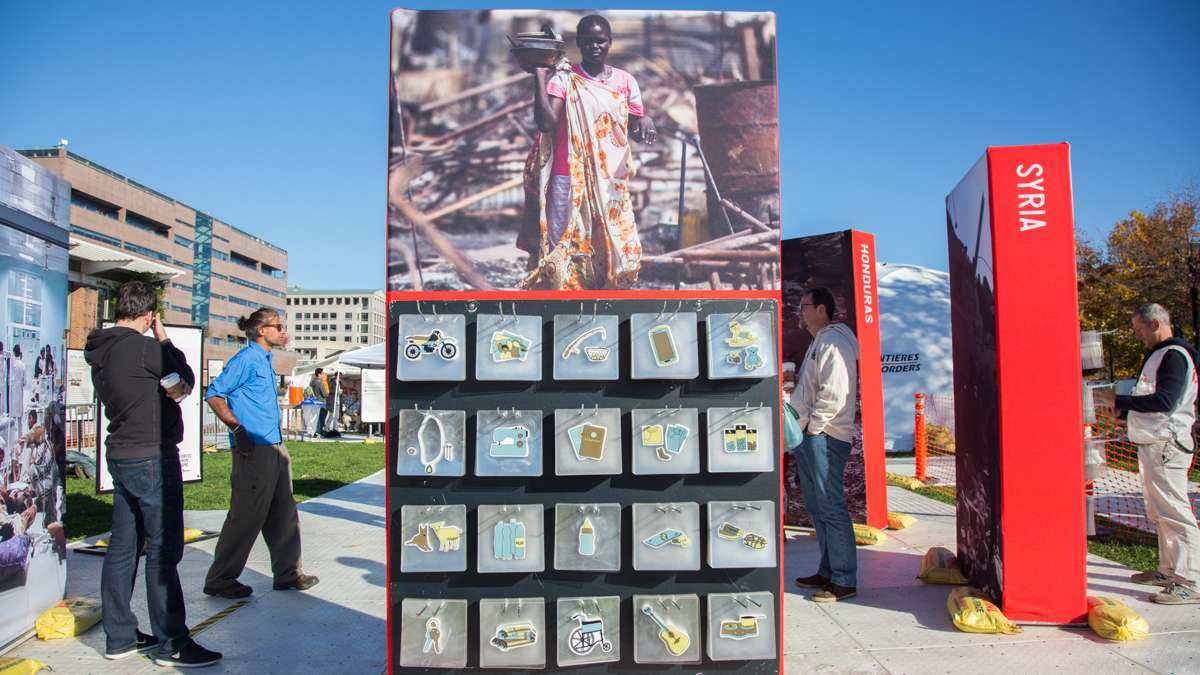
The first stop in the journey is 'push factors' showing the issues that cause people to flee their homes. Visitors are given 30 seconds to grab five items from the wall before they continue their jouney through the exhibit which is open on Independence Mall November 5 to 13. (Emily Cohen for NewsWorks)
-
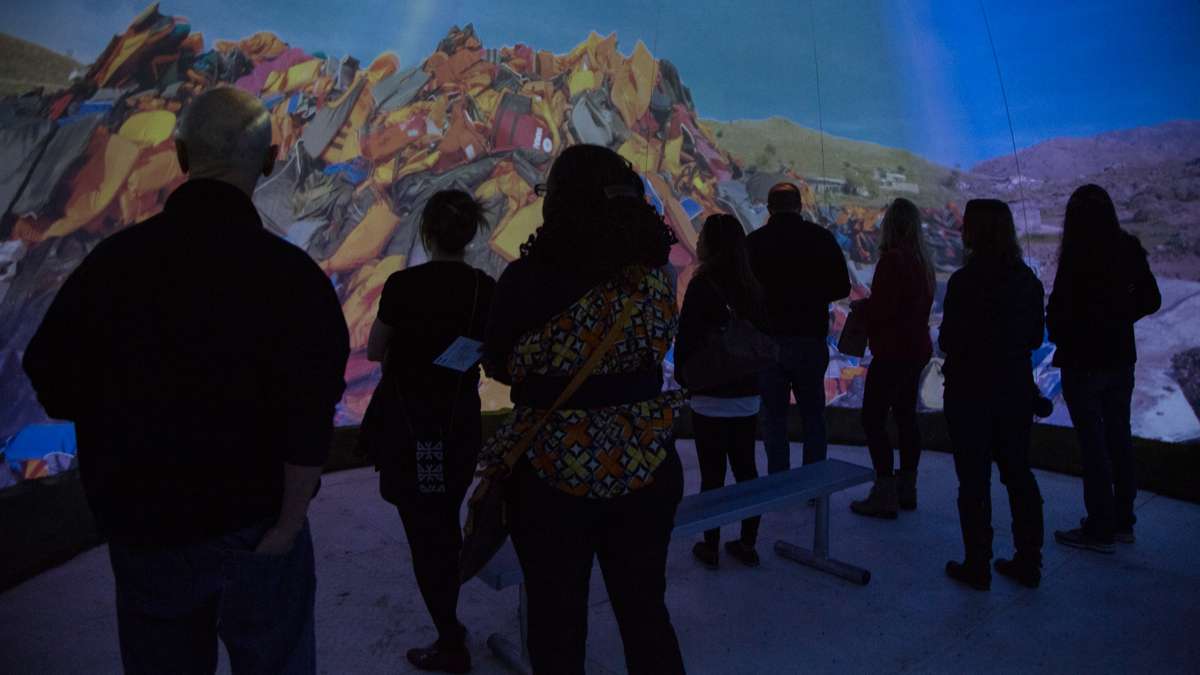
Patrons enter a dome for a 360-degree video experience which introduces them to the journeys of migrants worldwide. (Emily Cohen for NewsWorks)
-
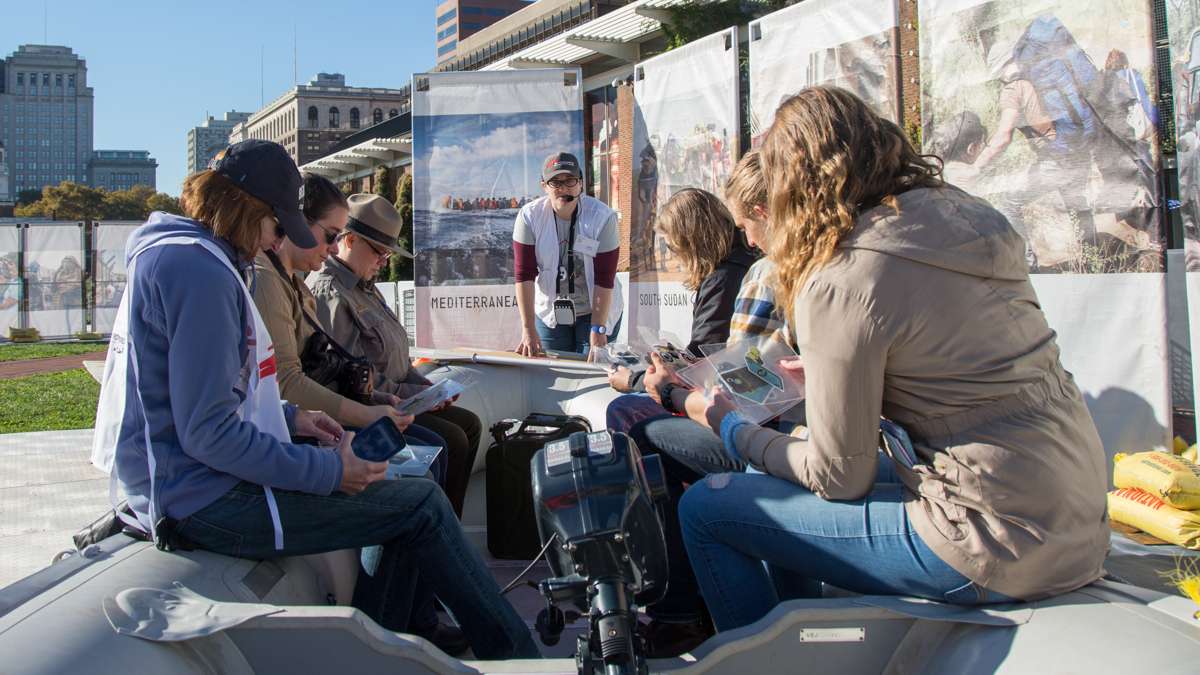
Visitors take a step-by-step journey as they imagine what life is like for the more than 65 million forcibly displaced persons worldwide. The exhibit is open on Independence Mall November 5 to 13. (Emily Cohen for NewsWorks)
-
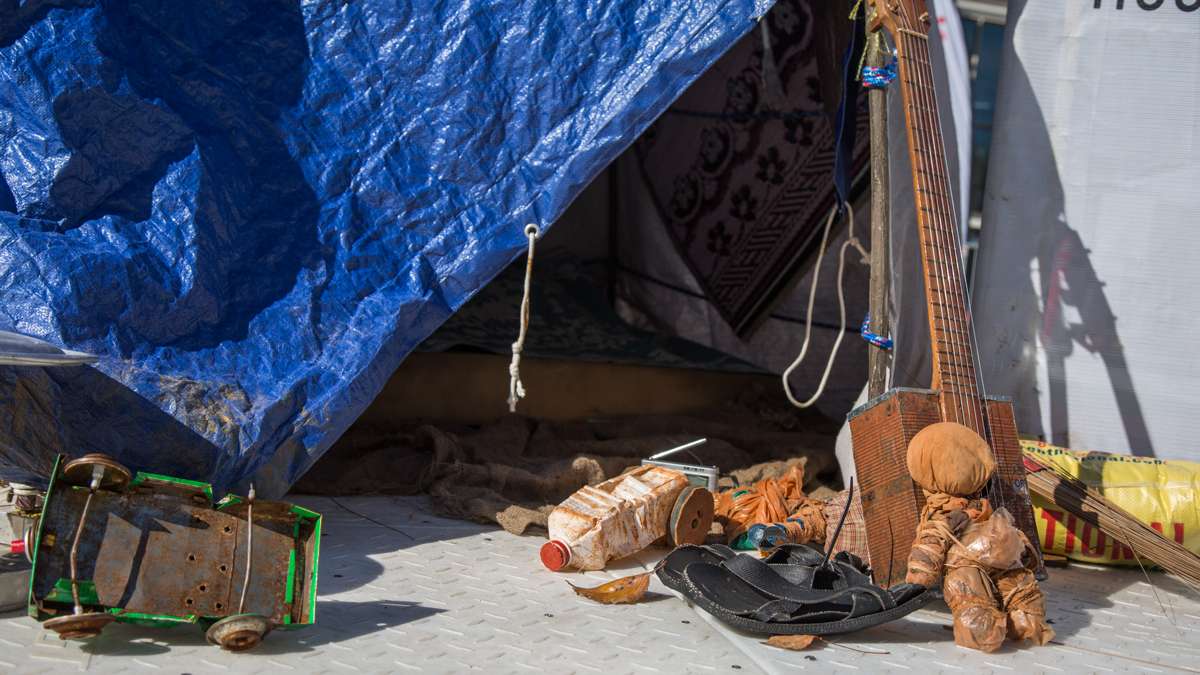
A makeshift tent contains a migrant family's few possessions. (Emily Cohen for NewsWorks)
-
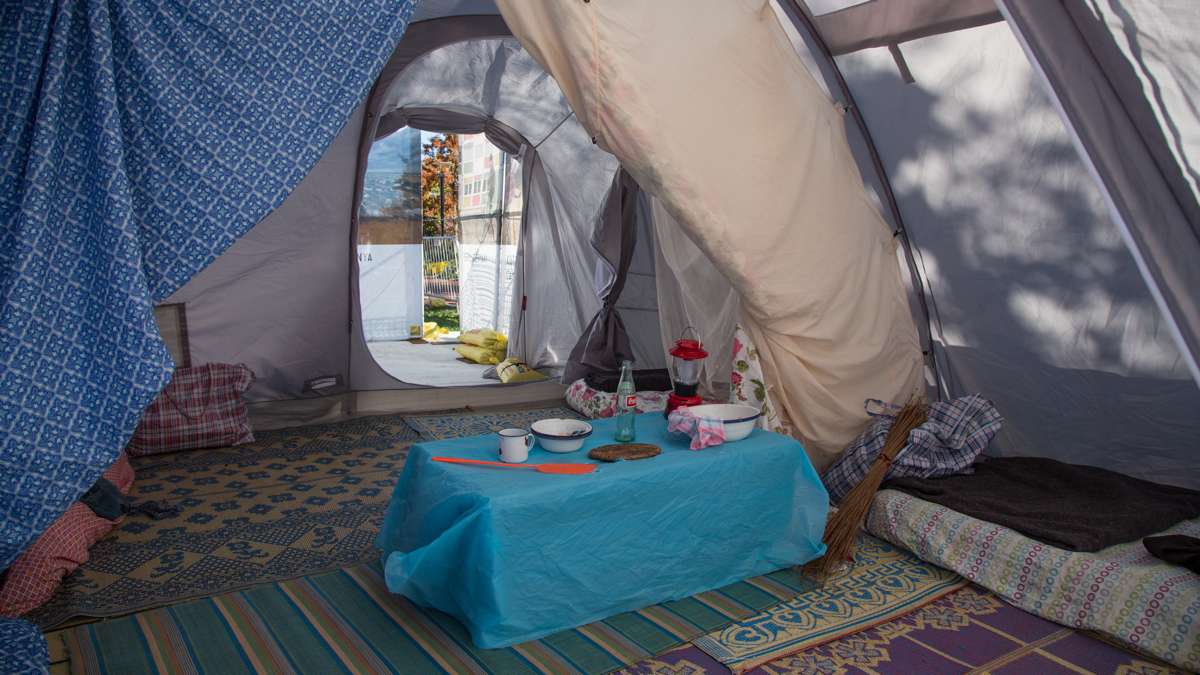
When migrants make it to refugee camps they are often placed with other families in large tents or makeshift homes. Spaces are tight and cultural traditions must be respected making the process even more tolling on the migrants. (Emily Cohen for NewsWorks)
-
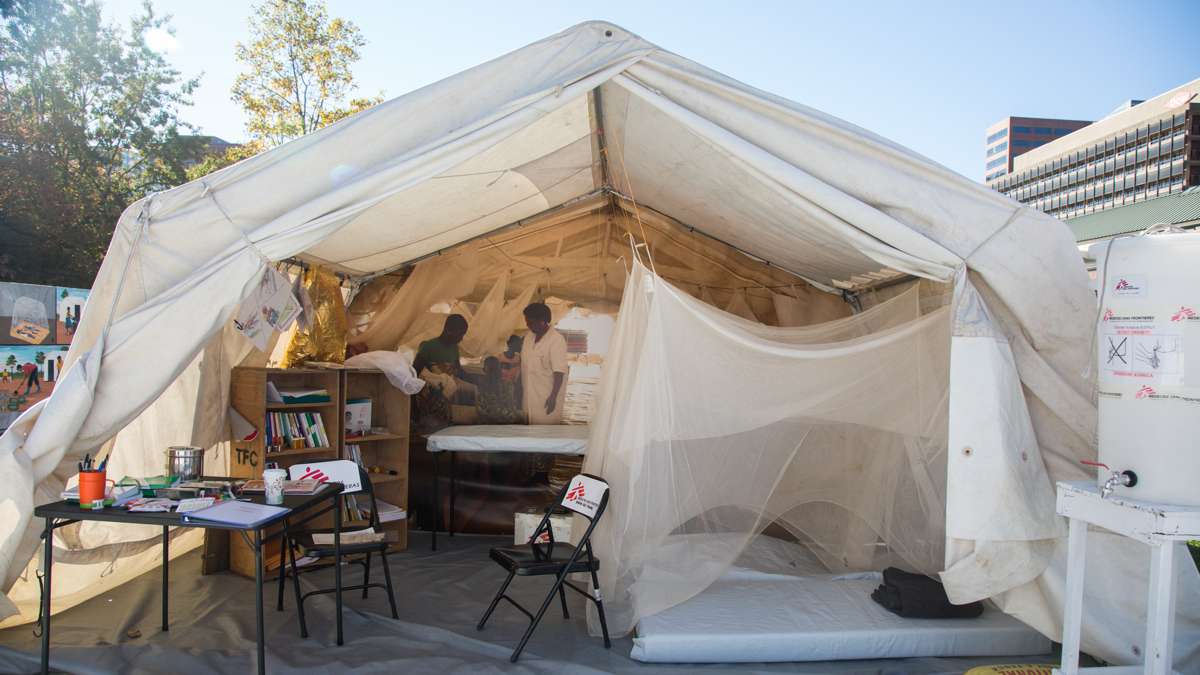
Médecins Sans Frontières, the French name for Doctors Without Borders, is an international medical humanitarian organization that brings aid to people affected by armed conflict, epidemics, natural disasters, and exclusion from healtcare in 70 countries worldwide. (Emily Cohen for NewsWorks)
-
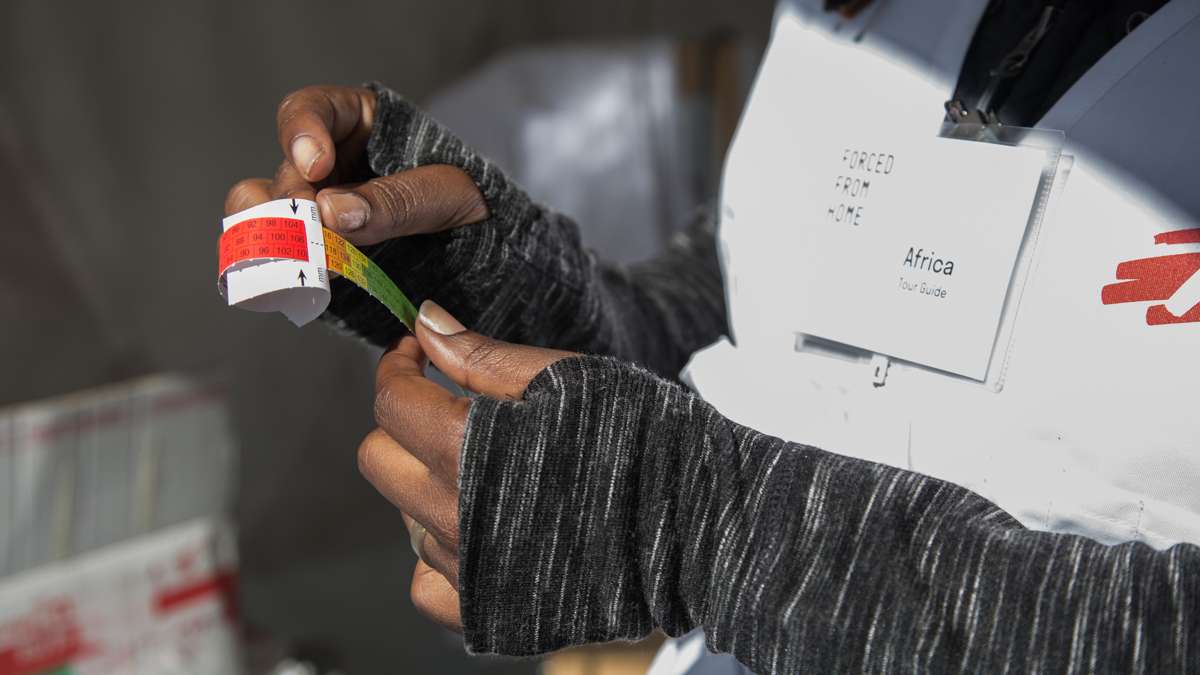
Dr. Africa Stewart shows how to use a MUAC tool, middle upper arm circumference, which is used for determining malnutrition in children who reach MSF aid encampments. (Emily Cohen for NewsWorks)
-
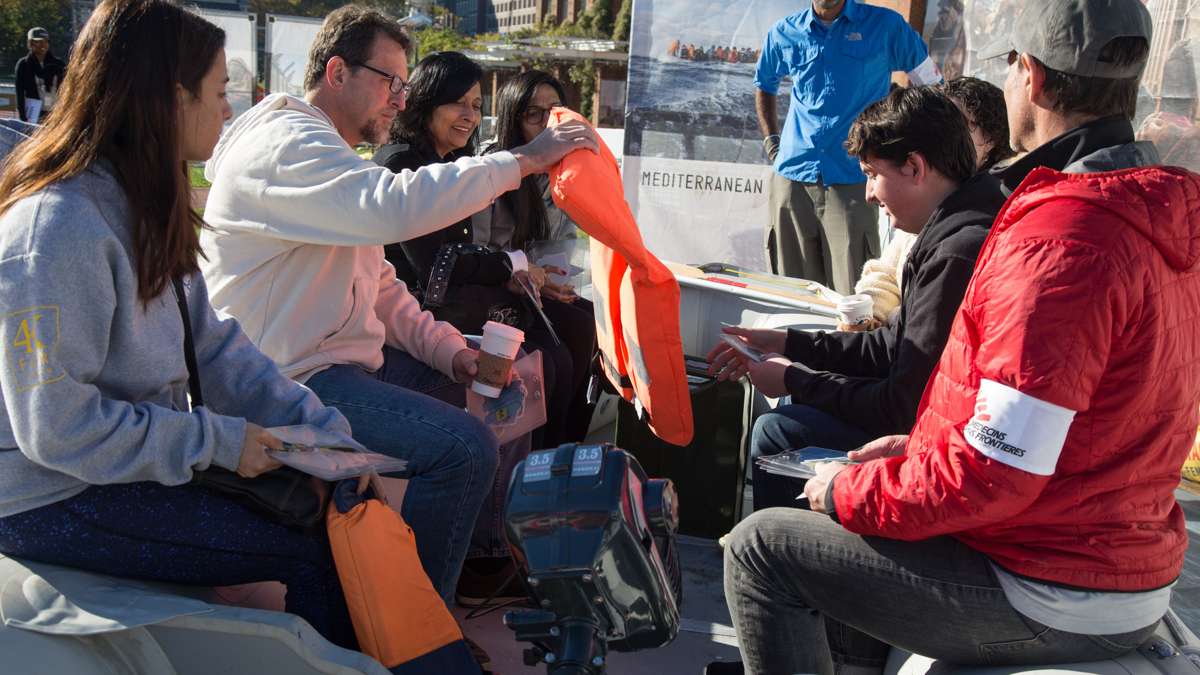
Dr. Africa Stewart shows how to use a MUAC tool, middle upper arm circumference, which is used for determining malnutrition in children who reach MSF aid encampments. (Emily Cohen for NewsWorks)
-
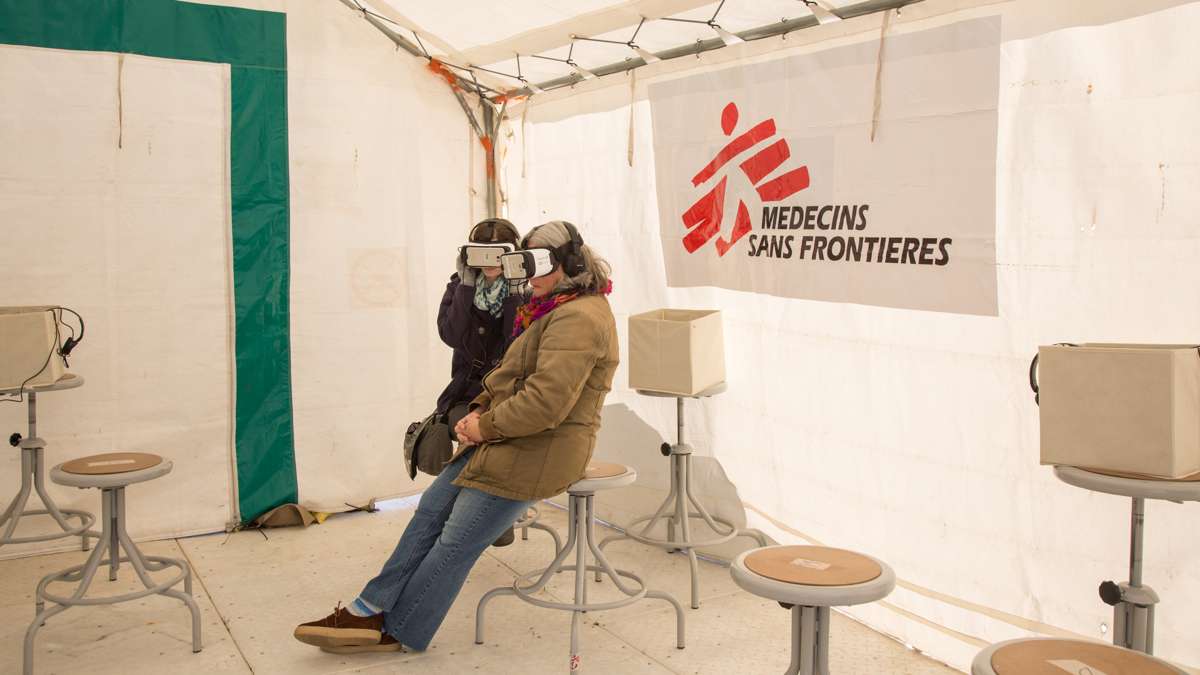
Using new technology to reach a greater audience, MSF created three Virtual Reality video experiences telling the stories of displaced individuals from camps in Iraq, Mexico, and Tanzania. (Emily Cohen for NewsWorks)
-
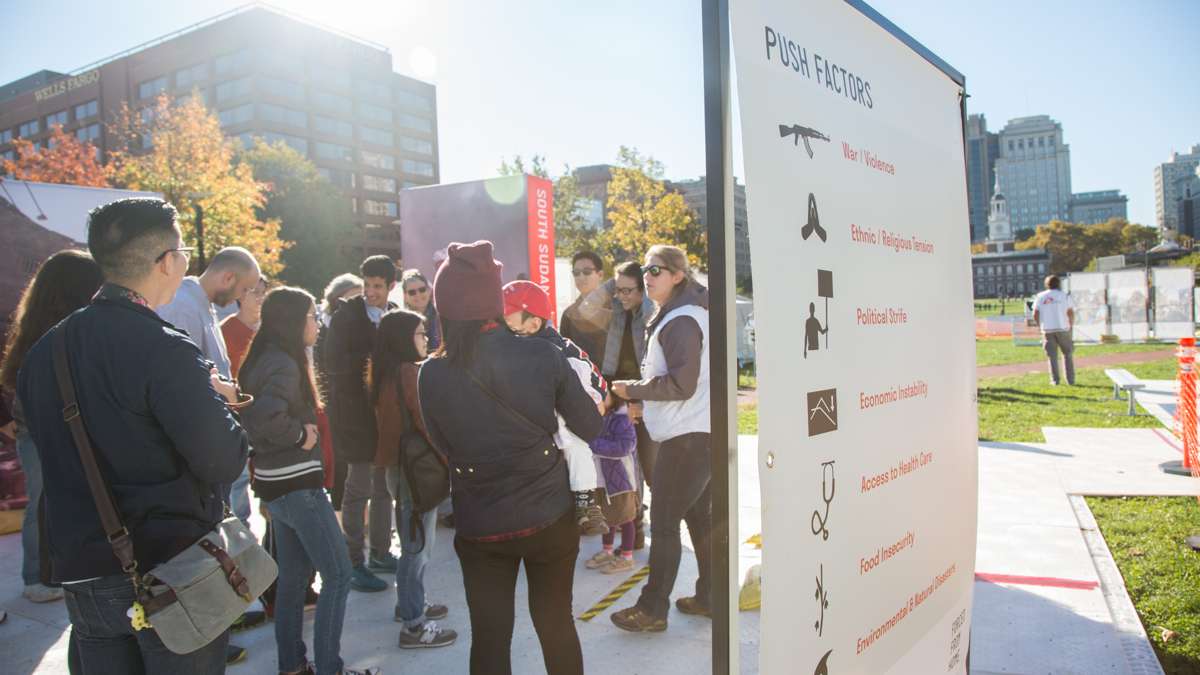
An aid worker discusses different push factors that would cause someone to make the decsion to leave their homes. (Emily Cohen for NewsWorks)
-
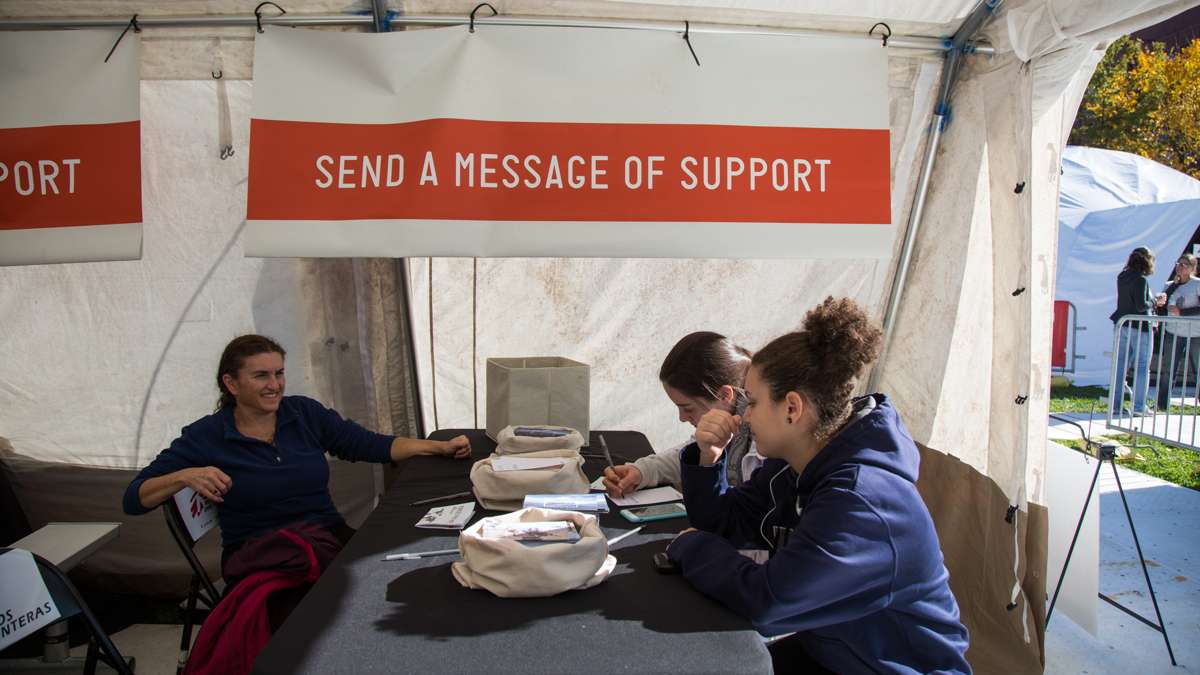
The last stop in the exhbit gives visitors a chance to write letters to MSF aid workers, sometimes something as simple as a joke or a thank you can lift the spirits of aid workers who are away from their families for months at a time. (Emily Cohen for NewsWorks)
-

-
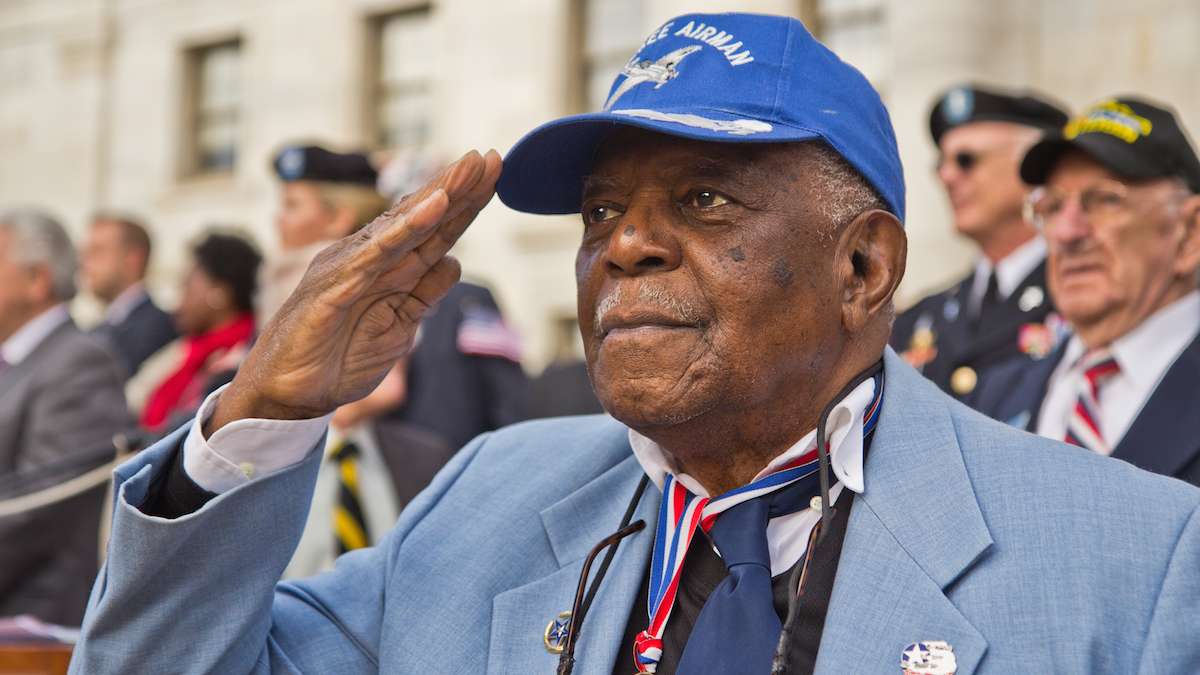
-

-
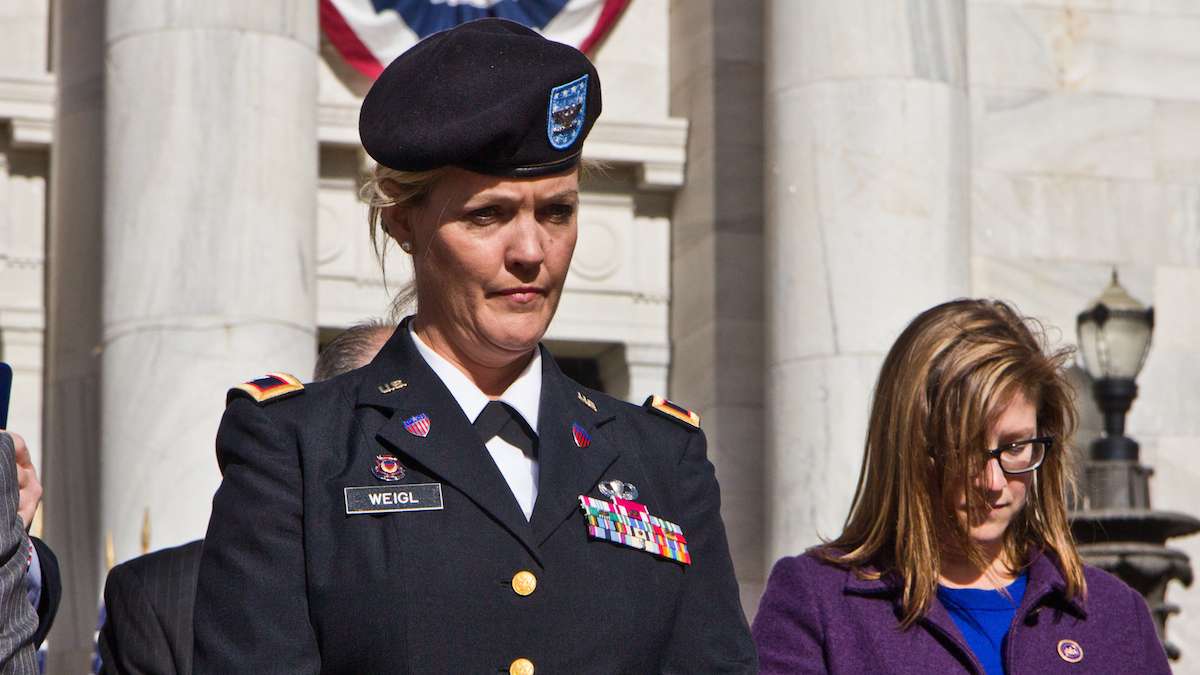
-

-
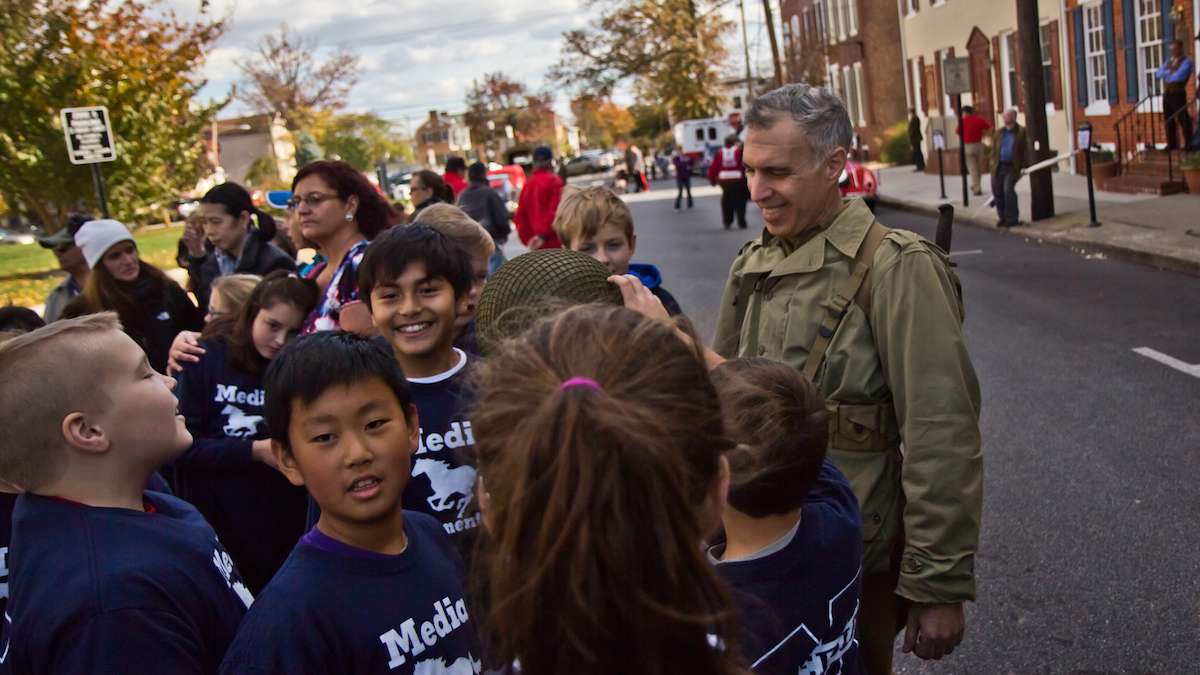
How ironic. Just as many Americans were threatening to move to Canada, an installation opened on Independence Mall to replicate the experience of more than 65 million people who are currently on the move. Unlike American voters distraught over an election, however, they were forced from home.
Seeking distraction from the election, I visited an interactive exhibit created by the international relief organization Doctors Without Borders (Médecins Sans Frontières, MSF), which closed on Sunday. They constructed a virtual journey, called “Forced From Home,” that follows the path taken by people who leave home to escape calamities such as war, ethnic persecution, and natural disaster.
Walking through the exhibit made tangible, in a way news reports cannot, the tragedy unfolding in the largest diaspora in human history.
Bringing the refugee experience home
Led by an MSF field worker, Melanie, a French native, our group of five visited a series of stations representing points along the relocation journey. From boarding an overcrowded boat, to being segregated by relocation status, to paying smugglers, the tour tried to give us a glimpse into the mindset of refugees who leave everything and everyone they know behind in order to save their lives.
In 2015, about 34,000 people a day made this awful decision, feeling they had no choice.
Melanie has worked with MSF since 2010 in South Sudan, Ethiopia, and Haiti. MSF has 35,000 staff working in almost 70 countries, but most, 25,000 of them, serve in their home countries.
On the flight path
We were handed identity cards listing nations of origin and status. As a virtual refugee from the Islamic Republic of Afghanistan, I was classified as an “asylum seeker,” one wanting long-term sanctuary in another country.
I met the technical definition of a “refugee,” one who crosses a border to escape conflict or persecution. Others were “internally displaced persons,” those who leave home but remain in their countries. The distinction is significant: Refugees are protected by international law, while internally displaced persons remain under the jurisdiction of their local government. According to MSF, of the 65 million currently forced from home, about 41 million are internally displaced.
The term “migrant” is frequently, and incorrectly, used in referring to people forced from home. Migrants leave to improve their economic situation. They are not forced out; their lives are not in peril.
Choosing what to carry, what to leave
We were told we were leaving home in 15 seconds, and could choose five things to take on our journey. We weren’t told where we were going, and Melanie urged us to hurry as we grabbed plastic cards bearing pictures of food, clothing, blankets, water bottles, animals, and passports, among other things.
She kept counting off the seconds. It was hard to focus on what would be useful. Then time was up. Whatever we had in hand would have to sustain us and also serve as currency, to be surrendered as payment as we went along.
We were led to an inflatable boat with a motor, the kind familiar from news footage of escapees headed to Greece and Italy. It looked incredibly small, maybe because the boat is never visible on the news, just the dozens of humans clinging to every square inch.
According to our guide, passage can cost $800, not including an inadequate life vest offered to passengers. Sometimes smugglers escort groups and force them into the water as soon as land is in sight, whether they can swim or not. At other times, groups are sent off unescorted, and maybe without any way of contacting a passing ship when they reach international waters. At one time, Melanie explained, cell phones were provided to call for help, but no longer. Even if someone on the boat has a phone, battery and cell strength are uncertain, making rescue even more precarious.
We were lucky and reached a refugee camp — a milestone, because a camp offers the first opportunity to eat, wash, rest, or plan what to do next. In addition to food, tents, pit toilets, and even a cell phone charging station powered by a solar panel, there was clean water. Each person would be limited to two gallons a day for everything: drinking, cooking and washing. By comparison, an American might use 90 gallons in a day.
Timely medical treatment is key
The importance of clean water to people on the move was underscored at the next stop, a medical tent set up to treat cholera. Cholera, a highly communicable disease arising from consumption of unsanitary water, can cause dehydration and death.
In another tent we saw a thin cardboard strip used to diagnose malnutrition by measuring the upper arms of children between 6 months and 5 years of age. It is wrapped around the small arm, and the color where the ends meet indicates whether a child is adequately nourished (green), should be watched (yellow, orange), or immediately admitted to a feeding center (red). No one on the run receives adequate nutrition, but young children are particularly vulnerable. If malnourished, they are given high-calorie food in packets the size of airline peanuts. Just two of these a day for a week can make a noticeable improvement in a child on the edge of malnutrition.
Mosquito-borne illness is another threat, particularly malaria. Though deadly, it can be diagnosed with a simple blood test and treated with a blister pack of anti-malarial pills. In mosquito-prone regions, MSF also distributes protective netting for use over beds.
The medical tents were one area in which we refugees were not asked to pay, because MSF doesn’t charge for care. In providing medical care for displaced populations, cost isn’t as much an issue as speed — addressing illnesses and injuries quickly, while straightforward field treatments can still be effective in debilitated patients.
Assisting people in crisis for 45 years
Founded by medical professionals in Paris in 1971, and based in Switzerland, MSF goes wherever its leadership directs, based on need. The independent humanitarian organization cooperates with countries’ prevailing regulations, but provides service to anyone, irrespective of race, religion, gender, or politics.
Philadelphia was the last of five U.S. cities to host Forced From Home this year, but the exhibit will continue in 2017 and 2018. Melanie explained that the tour is an example of bearing witness, of bringing attention to situations of extreme need and unacceptable suffering. It is an operating principle that distinguishes MSF from other aid organizations, which choose a more cautious approach.
Bringing the refugee experience to the doorstep of major American cities breaks through the noise of more trivial concerns and the numbing helplessness produced by the scope of the problem. In an hour, it produces a visceral understanding and suggests possible actions for those inspired to do something to help.
By the end of the journey, we each had one of the five cards left, and Melanie collected them to see which items we had refused to surrender. Another woman and I had both clung to passports, and Melanie noted that, while for an American or French citizen, a passport is indeed valuable, for refugees coming from Afghanistan or the Central African Republic, they are not so prized and might even be dangerous, marking the holder as a potential terrorist. We still had a few things to learn about being forced from home.
Though the exhibit inflicts no real hardship on visitors, it leaves an indelible impression of the desperation, emotional anguish, and physical dangers experienced by more people than ever before, every single day. And for Americans who joke or fantasize about making a run for the border, it reminds us how great our country is, and how very lucky we are to be living here.
WHYY is your source for fact-based, in-depth journalism and information. As a nonprofit organization, we rely on financial support from readers like you. Please give today.


